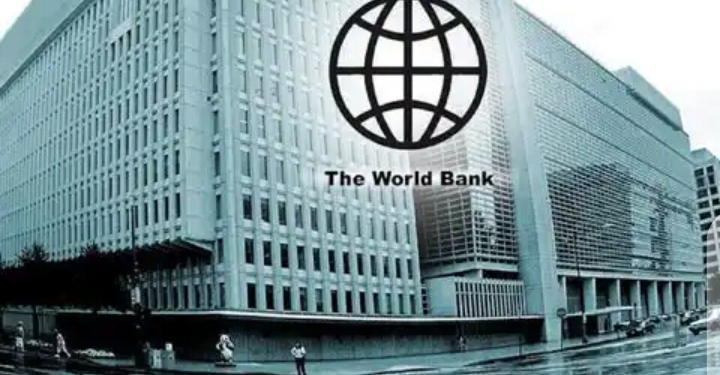The poverty rate in Nigeria, which gets up to nearly 6 million people by 2022, said World Bank.
In a report released last week, the bank predicted that 95.7 million Nigerians would live below the poverty line by 2022.
The bank said that without the virus, 90 million Nigerians would live in poverty by 2022. However, the virus would increase that number by about 6 million in two years.

“Given the impact of the crisis, however, the national poverty rate is expected to increase from 40.1 percent today to 42.5 percent in 2020 and 42.9 percent in 2022, meaning that the number of poor people in 2020 will be 90, Will be 2 million and 95.7 million in 2022.
“Given the difference between these two scenarios, the crisis alone is likely to drive another 4.9 million people into poverty this year. By 2022, another 5.7 million people will be driven into poverty. ”
The report said that a disproportionate proportion of those who were driven into poverty by the COVID-19 crisis would likely be those living in urban areas and earning income from services.
The bank continued to predict: “More than a third of the additional people likely to be driven into poverty by the COVID-19 crisis are likely to live in urban areas, while only 15.9 percent of the current poor are urban residents.
“It is predicted that only 13.1 percent of the additional poor people will live in households in 2022 where the head works mainly in agriculture, while today 56.0 percent of poor Nigerians live in agricultural households.
“Many Nigerians who are not poor today are vulnerable to falling below the poverty line during the COVID 19 crisis. People living just above the poverty line are more susceptible to poverty in the event of shocks. People who consume between the poverty line and 1.5 times the poverty line can be defined as “at risk”.
According to the bank, 40.1 percent of Nigerians (82.9 million people) nationwide live below the poverty line, while another 25.4 percent (52.6 million people) are at risk according to this definition.
It was found that more than three quarters of the population in rural areas were either poor or in need of protection, but even in urban areas where the poverty rate was much lower at 18.0 percent, around a quarter of the population would be vulnerable to shocks.
The report found that most Nigerian workers, particularly those living in poor households, were employed in agriculture or in non-agricultural businesses that may be more vulnerable to the COVID 19 crisis.
It has been reported that only 16.8 percent of Nigerians work (12.9 million workers) are employed in wage jobs.
According to the Nigeria Living Standard Survey (NLSS) 2018/19, they were mainly employed in paid jobs, while around 42.7 percent were mainly in agriculture (32.7 million employees) and 40.6 percent mainly in non-agricultural companies (31.1 million Workers) worked.
The report found that social distancing measures pose a serious threat to non-farm businesses that rely on personal interactions with customers, as well as farm workers who need to buy wholesale and sell products.
It says: “Agriculture is particularly important for the poor and the weak, and wage employment is limited: only 7.7 percent of poor Nigerian workers (2.0 million workers) work mainly in wage employment, while 59.3 percent of poor people Nigerian workers are mainly employed in agriculture (15.5 million workers).
“There are also significant geographical differences in the distribution of different types of jobs in Nigeria, with urban areas in the south of the country having a larger share of wage jobs and agriculture being more concentrated in rural areas and in the north.”
The bank said the COVID-19 crisis would jeopardize the well-being of Nigerian households both through direct health channels – with family members sick or dead – and through at least five economic channels.
The report says in part: “First, households can lose income from work because vulnerable jobs – especially in non-agricultural companies, agricultural products sales and informal wage workers – suffer because social contracts and employment contracts disrupt dimensions.
“Household income is also reduced if income-creating members are infected with the virus. Second, the sources of non-work income can decrease. For example, transfers will decrease if sending households have a lower income or if the infrastructure to carry out transfers is interrupted.
“Thirdly, market disruptions could increase the prices of essential groceries, reduce household purchasing power and prevent farm workers from selling their products.
“Fourth, the provision of services can be disrupted by social distancing measures, including the closure of schools. Finally, direct health care spending for households whose members are infected with the virus limits spending on other important things. “”









